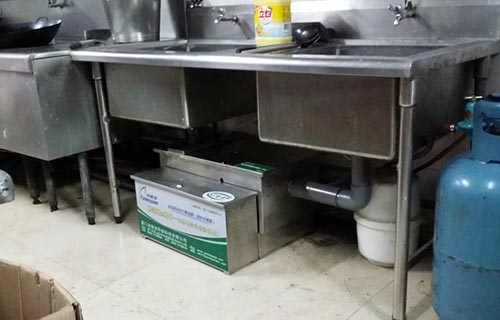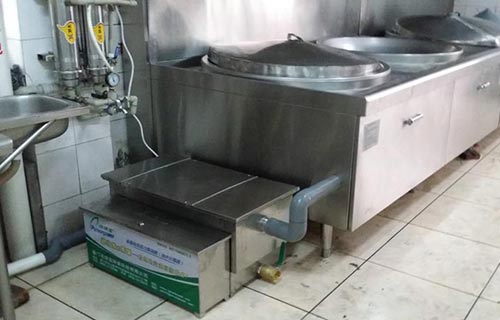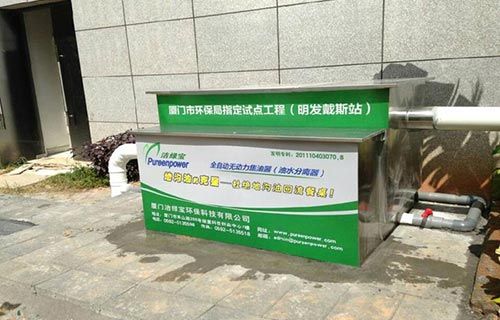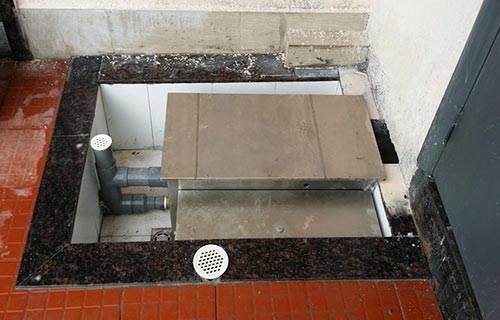Grease Traps
Grease separators are an effective & hygienic method of separating fat and grease from wastewater flow
Fats, Oils and Grease enter the drainage system and cause various problems in private drains, public sewers, pumping stations and treatment plants. You may need to sort the problem because it is affecting your business operation, increasing your maintenance costs or because you need to comply with legislation. Grease traps are the most common and effective way of controlling this issue at source.
When FOGs enter the drain it may only travel a few metres before it solidifies, sticks to the drain pipes and accumulates with other material to create blockages. The grease trap’s function is to slow down and cool the wastewater allowing it to separate and be retained within the tank. The water can then safely enter the main drainage system.
The “grey water” which contains the FOG, enters the trap through the inlet. “Baffles” control the flow in the tank and then hold back the separated material from flowing downstream. The heavier materials settle to the bottom of the grease trap (sludge). The lighter materials separate and float to the top of the water (fats, oils and grease).
As FOG accumulates, the grease trap must be regularly cleaned and maintained by professionals in order for it to continue working effectively. It must also be examined and serviced to ensure it doesn’t cause blockages and remains compliant with legislation.
Challenge
Basically, a grease trap is a plumbing device that separates the grease, oil and excess food stuffs from the water that can safely enter the sewer system. ... When the outflow from your kitchen sink enters the grease trap, the solid food particles sink to the bottom, while they lighter grease and oils float to the top.
Value
Commercial grease traps are sized according to the rate of incoming flow, in gallons per minute (GPM). Associated with this incoming flow rate is the trap's capacity. This rated capacity, in pounds, is listed at twice the flow rate. For example, a 10 GPM trap has a rated capacity of 20 pounds.






